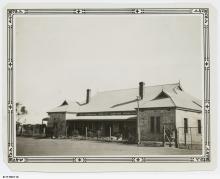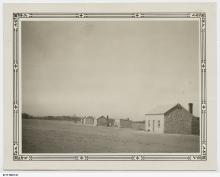Koonibba
The story of Ettie Blueskin's forced removal from her family and community, written by Sonia Waters, Ettie's great-granddaughter:
https://www.portenf.sa.gov.au/page.aspx?u=2191;
A comprehensive and critical examination of Kooniba mission and children's home, especially in respect to spirituality and resistance: Eve Vincent, 'The Making of 'Mission Mob': Koonibba Lutheran Mission as a Site of Memory' (2013) 37 Journal of the Anthropological Society of South Australia, 31 http://www.anthropologysocietysa.com/home/wp-content/uploads/2014/10/Vincent-JASSA-37.pdf
-31.903490, 133.424806Koonibba Lutheran Children' Home was built near Koonibba mission. The aim of the home was to remove Aboriginal and Torres Strait Islander children from their families. Children living on missions were especially targeted, so that they could be "removed from the camp atmosphere, and brought up in a Christian atmosphere". A former report from Koonibba describes how staff found "two girls about fifteen or sixteen years old... wandering about the bush and it was quite evident that it was our duty to bring them in and save their souls". Moreover, the two Indigenous girls "were not given a chance to resist" .
0Established in 1913 by the Lutheran Church of Australia, closed in 1963.
Koonibba Lutheran Children's HomeKaren George and Gary George, Koonibba Children's Home (1913 - 1963) (19 May 2014) Find & Connect https://www.findandconnect.gov.au/ref/sa/biogs/SE00116b.htm
SASouth West Aboriginal Land & Sea Council
https://www.noongarculture.org.au/noongar/
South West Aboriginal Land & Sea Council, Noongar, South West Aboriginal Land & Sea Council
https://www.noongarculture.org.au/noongar/
They used to lock us up in a little room like a cell and keep us on bread and water for a week if you played up too much. Stand us on a cement block outside in the rain with raincoats on if you got into trouble - for a month, after school, during playtime (p. 139).
Confidential evidence 358b, South Australia: man removed as a baby in the 1950s; first placed at Koonibba Mission, then a Salvation Army Boys' Home where he experienced the above punishments, then on to reform school and prison.
Human Rights and Equal Opportunity Commission, Bringing them Home: National Inquiry into the Separation of Aboriginal and Torres Strait islander Children from Their Families (1997)
Birth Confidential evidence 358bThe other rejection came, of course, from other Aboriginal people in the community. They called us 'whitewashed', 'coconuts' and things like that; also 'Johnny-come latelys'. You then had to justify your identity, or try and find a place amongst all that.
Confidential evidence 367, South Australia: woman removed as a baby to Koonibba in the 1940s.
Human Rights and Equal Opportunity Commission, Bringing them Home: National Inquiry into the Separation of Aboriginal and Torres Strait islander Children from Their Families (1997)
Birth Confidential evidence 367If you grow up with no love ... I thought sex was love. That's why I probably had all those kids, 'cause I was trying to get all this love, y'know. 'Cause I never got it when I was in the Home (p. 192).
Confidential evidence 383, South Australia: woman removed at about 4 years in the 1940s and raised largely at Koonibba Lutheran Children's Home.
Human Rights and Equal Opportunity Commission, Bringing them Home: National Inquiry into the Separation of Aboriginal and Torres Strait islander Children from Their Families (1997)
4 years Confidential evidence 383Koonibba Lutheran Children’s Home, 1929-34: Group of people outside the Koonibba Lutheran Church after a Sunday service

Koonibba Lutheran Children’s Home, 1929-34: The children's dormitory
Koonibba Lutheran Children’s Home, 1929-34: A group of children in the courtyard of the children's dormitory

Koonibba Lutheran Children’s Home, 1929-34: Living quarters
